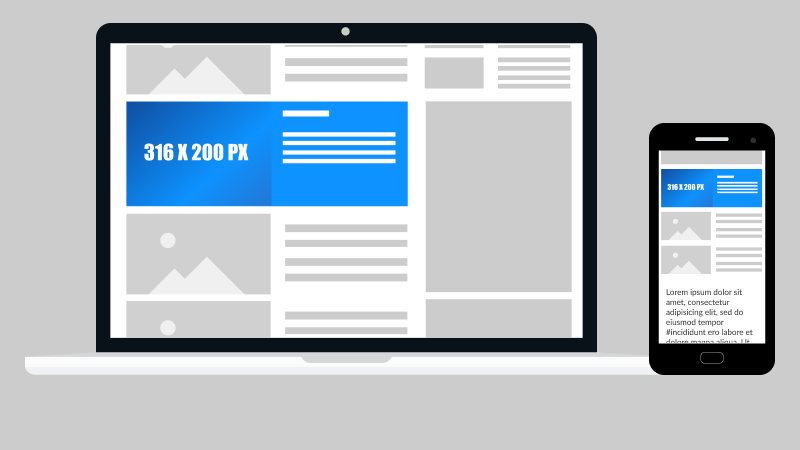Understanding Native Advertising: A Guide for Publishers

In the intricate landscape of digital advertising, publishers often face the challenge of determining which type of advertising to focus on. What proves to be the most profitable? What promises a seamless user experience? What is currently trending in the market?
One clear answer to these questions lies in native advertising. This article explores “what are native ads,” highlights what sets them apart, and emphasizes why publishers must give them serious consideration.
Table of Contents
- 1. What Does Native Advertising Mean?
- 2. Why Native Ads Are a Win for Publishers
- 3. Concluding Thoughts
What Does Native Advertising Mean?
Native advertising refers to a type of online advertising that matches the form and function of the platform on which it appears. Unlike traditional ads, native ads blend in with the content around them, often resembling news articles, editorial content, or product reviews. This integration helps the ads appear less intrusive and more contextually relevant to the viewer. Native advertising aims to provide value through content that is informative, entertaining, or useful, while simultaneously promoting a brand or product. This approach is particularly effective because it engages the audience through content that aligns with their interests and the medium they are using, making the advertisement feel less like a direct sales pitch and more like a natural part of their browsing experience.

Why Native Ads Are a Win for Publishers
Native advertising offers numerous advantages for publishers in the digital marketing landscape. It’s a powerful tool that aligns seamlessly with the interests of both advertisers and audiences. Let’s explore the key benefits of native advertising for publishers:
-
-
- Revenue Prospects
Native advertising is fast becoming the tool of choice for advertisers aiming to enhance brand recognition and cultivate customer relationships. With the increasing production of native content by brands, the demand for native ad slots is also on the rise. This heightened demand, coupled with growing competition, allows publishers to potentially command CPM rates that reach $10 or even $20.
- Revenue Prospects
-
-
-
- Engagement & Viewability
Termed as the antidote to ad fatigue and blindness, native ads boast CTR rates that are 8.8 times higher than those for regular banners. Users are also reported to view these ads over 50% more than display ads, ensuring advertisers remain satisfied with campaign performance.
- Engagement & Viewability
-
-
-
- Enhanced User Experience & Sessions
What are native ads in Google or other platforms doing differently? They are not driving users away like their intrusive counterparts. Native advertising dismisses the disruptive pop-ups and irrelevant creatives of the past, offering a user experience that is often well-received. For publishers aiming to optimize ad revenue per user session, native ads can potentially encourage longer session durations and more pages per session.
- Enhanced User Experience & Sessions
-
-
-
- Ad-Blocker Resilience
As ad blockers wreak havoc on overall revenue, native advertising emerges as a potential solution. While not entirely immune to ad-blockers, certain forms of native advertising are seen as a pathway to re-engaging ad-blocking users through responsible, high-quality ads.
- Ad-Blocker Resilience
-
-
-
- Relevance & Context
Thanks to contextual targeting, Native advertising in digital marketing can be summarized as the art of delivering pertinent content to accurately defined audience segments in a logical and coherent manner. Such precision fosters positive user attitudes and ensures that the content remains pertinent over time, avoiding rapid obsolescence.
- Relevance & Context
-
-
-
- Publisher Control
Unlike programmatic display ads, native advertising grants publishers greater autonomy over their website’s content. They have substantial input concerning the overall tone, style, and relevance of the ads displayed. However, it is imperative to maintain transparency, ensuring that sponsored posts are unmistakably identified as such.
- Publisher Control
-
-
-
- Trust Building
Recent studies, including one from 2022, illustrate a growing consumer inclination towards online content on editorial sites over social media. Ads hosted on premium publisher sites are reportedly three times more effective for brands, emphasizing the dividends of investing in quality content and solid online branding for publishers.
- Trust Building
-
Start earning revenue today!
Sign up
Already using Holid? Login
Concluding Thoughts
If native advertising is not yet a cornerstone of your monetization strategy, now may be the perfect time to explore it further. Its increasing demand, exceptional performance, and ability to foster trust make native advertising a potent tool for publishers. While it isn’t without its challenges, executed effectively, it can serve as a powerful catalyst to elevate revenue potential.
